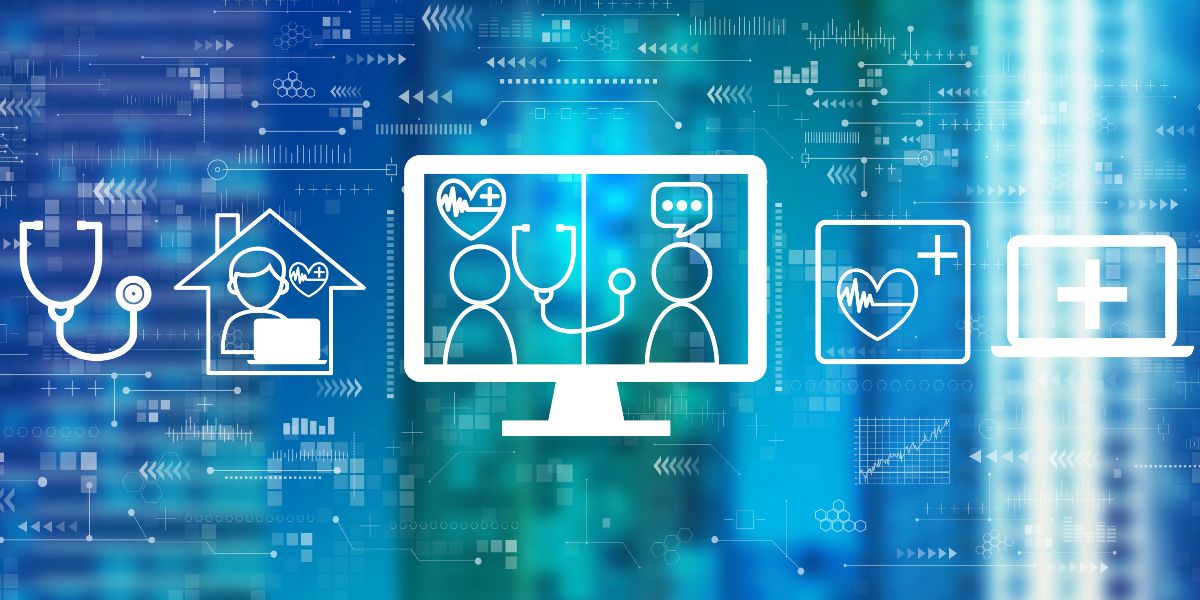AWS Public Sector Blog
Category: Customer Solutions
Using the cloud to better understand and address social determinants of health
According to FAIR Health and the American Medical Association, telehealth use saw a nearly 3000% growth from pre-pandemic to during the pandemic. These services make virtual, real-time interactions between patient and provider possible. However, the great promise of telehealth has highlighted existing roadblocks that some face when trying to access healthcare in this country. The National Health IT Collaborative for the Underserved (NHIT) is a 501(c)3 non-profit organization on a mission to provide equitable access to health technologies and to make sure that these technologies address the needs of underserved communities and communities of color. Since its founding in 2008, NHIT has worked to advance health equity and economic viability on issues such as broadband access, electronic health records, precision medicine, consumer health applications and disaster resiliency.
Accelerating COVID-19 vaccine rollout with Zocdoc on AWS
With more than 1,400 different systems that healthcare providers use to run their scheduling, and millions of Chicago residents seeking a vaccine, a unified, citywide rollout for COVID-19 vaccinations is a challenge. Like many municipalities, early in the pandemic, the city of Chicago preferred to offer its residents a centralized find-and-book appointment system for COVID-19 testing, but other priorities and operational challenges prevented this. However, for vaccines, the team leading the city’s COVID-19 vaccination response was determined to deliver a more seamless experience for residents. The city used the Zocdoc Vaccine Scheduler built on AWS.
Education transforming like never before
In 2020, education transformed like never before. Educational institutions needed to be able to provide students, teachers, and staff with immediate access to education and AWS helped customers and partners modernize their systems and applications and reach learners remotely, quickly, and at scale. In 2021, innovation continues in the world of teaching, learning, and research—as well as the use of technology to automate processes and drive better student outcomes.
AWS Diagnostic Development Initiative helps nonprofits harness the cloud to research and combat COVID-19
We’ve helped multiple nonprofit research organizations advance their COVID-19 research through our AWS Diagnostic Development Initiative, first launched in March 2020. The next round of funding opens today. As we launch the next phase, we are excited to broaden the AWS Diagnostic Development Initiative’s scope and distribute the remaining $12 million this year. We will accept applications through the end of the year, with priority consideration given to applications received before July 31. Check out a few examples of the nonprofit research projects supported by the AWS Diagnostic Development Initiative.
Naval Research & Development Establishment (NR&DE) provides the US Navy access to AWS Secret Region
In June 2019, Naval Information Warfare Center Pacific (NIWC PAC) awarded AWS the first Blanket Purchase Agreement (BPA) in the US DoD for DoD Cloud Computing Security Requirements Guide IL-6 cloud services. This BPA allows for Navy customers to bring the benefits of commercial cloud to Secret workloads. In 2020, NIWC PAC made available the first AWS Secret Region IL-6 environment available for both internal customers residing on the NIWC PAC Secret Wide Area Network (SWAN) and external DoD and U.S. Department of the Navy customers. To support external customers, NIWC PAC deployed SkyDesk, a Citrix Virtual Desktop Infrastructure (VDI) solution that allows any SIPRNet terminal to connect and access the NR&DE IL-6 Cloud.
Modeling clouds in the cloud for air pollution planning: 3 tips from LADCO on using HPC
In the spring of 2019, environmental modelers at the Lake Michigan Air Directors Consortium (LADCO) had a new problem to solve. Emerging research on air pollution along the shores of the Great Lakes in the United States showed that to properly simulate the pollution episodes in the region we needed to apply our models at a finer spatial granularity than the computational capacity of our in-house HPC cluster could handle. The LADCO modelers turned to AWS ParallelCluster to access the HPC resources needed to do this modeling faster and scale for our member states.
Transforming digital education in Indonesia
In Indonesia, educational institutions like EdTechs and universities are using the cloud to transform education. By migrating to AWS, these organizations are able to deliver learning resources to millions of users, innovate at scale, and take advantage of the no-cost AWS education programs like AWS Educate and AWS Activate to enhance their curriculums.
The future of money is digital: How the cloud can deliver solutions for central bank digital currencies
Increasingly, central banks want to answer practical questions and make the technology choices involved to deliver a central bank digital currency (CBDC). They need a solution that delivers on their missions and meets the performance criteria required to support a stable monetary and financial system. To help organizations understand available technology options and see how cloud services can enable optimal solution designs, AWS authored a two-part whitepaper. Here are some of the highlights.
Bringing low-latency livestreaming to education with Amazon IVS
With in-person collaboration limited for much of 2020 and the foreseeable future, educational institutions have embraced new virtual means to connect with students and deliver information like classroom lectures, conferences, and dissertation presentations online. Recognizing the value and importance of high quality virtual collaboration, educational technology companies (EdTech) have been working to maintain the benefits of an in-person experience, for speakers as well as audiences, in online environments. Inspired by the increased demand for sophisticated virtual collaboration solutions, EdTech Mosaic Learning built and integrated new Amazon Web Services (AWS) features into its custom platform tailored for delivering dynamic video experiences at scale.
New human-machine collaborations unlock society’s big challenges
Research exploring how humans work with machines to solve problems in fields ranging from space to sustainability has established the potential to create far-reaching change in children’s education. The test-bed project is part of a wider program set up by Oxford University with support from AWS. Researchers have been as surprised by how quickly they have reached results as they are pleased with the outcomes. One of the test-beds, the Oxford X-Reality Hub Ed Tech project, set out to investigate how virtual reality (VR) could transform the classroom experience and close the gap between disadvantaged groups of pupils who statistically do less well than their peers.









